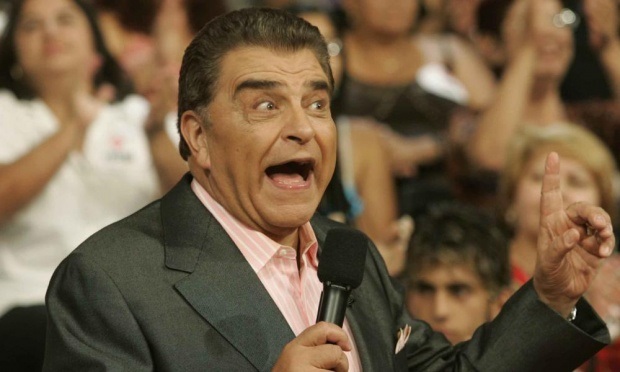Television’s ‘Sabado Gigante’ Problem
By Mac Margolis, Bloomberg
When Univision announced that “Sabado Gigante,” a weekend family variety show, would soon go dark after 53 years on the air, viewers were both puzzled and devastated.
After all, “Sabado Gigante” reaches more than 2 million U.S. viewers a week and many more overseas. It also lords over its time slot on Spanish-language television and, thanks partly to extensive product placement, has been a reliable cash cow Univision.
Cue the applause for Don Francisco, nom de scene Mario Kreutzberger, the Chilean-born emcee who for the last half-century has dominated the Latino living room with his iconic lineup of budding talent, musical and dance sketches, slapstick and interviews with presidents and prom queens.
Univision didn’t say why it’s pulling the plug. Kreutzberger, now 74, only added to the mystery last Saturday when he allowed that “Times have changed, we know that, and because of that we need to look for new challenges.” By Tuesday, his on-air goodbye had replayed more than 530,000 times on Facebook.
The unstated challenge is the demographic earthquake that has hit the Latino community in the U.S., shaking legacy media and tugging at the loyalties and tastes of some of its core customers.
That problem extends across the Latin broadcast spectrum, where younger spectators are deserting legacy shows. Of “Sabado Gigante’s” 2 million regular U.S. viewers, only 307,000 were young adults in the year ending March 31 — a 43 percent decline from the year ending in March 2011.
Across the board, “Giant Saturday” has seen its once-captive audience shrink from around 3.2 million total average viewers in 2008 to around 1.9 million in the U.S. for the week ending March 29. Now the media chatter is over whether Univision needs to change before it, too, declines.
For years, Spanish-language programming seemed to flourish in a cultural bubble, nurtured by its audience’s tightly-knit bond and a storied loyalty to the brands that filled every station break. “Hispanics used to embrace brands as an expression of who they were and to show they were coming up in the world,” said cultural consultant Giovanni Rodriguez, who grew up in a Puerto Rican family in the Bronx, and now advises businesses and government on how to pitch to Hispanic communities. “My dad only believed in Buicks. When we got a new TV, my mom wanted a Zenith,” he told me.
That loyalty may be history. A recent survey showed that most Latinos are no more committed to brands than non-Latino U.S. consumers. The big exceptions are less acculturated Latinos who are still more likely to go out of their way to find their favorite toothpaste or beverage.
Behind that shift, another more fundamental one is reshaping the Latino household, as the children and grandchildren of Hispanics gain on their immigrant relatives. In 2013, for the first time, U.S.-born Hispanics outnumbered those born outside the U.S. in the workplace, according to Pew Research Center.
For these native Hispanics, English is the new Buick. Pew Research Center found that by 2012, some 82 percent of Latinos got at least some of their news in English while nearly a third of them did so exclusively.
Contrast that with 2006, when 78 percent of Hispanics occasionally turned to news in English but only 22 percent relied on English-only media. “English is the lingua franca, and Hispanics want to be part of that global trend,” said Rodriguez.
In its glory, “Sabado Gigante” was not just a fun show but a ritual in Latin households, with whole families and friends gathered for the evening around the television. Now younger, more restless bilingual consumers with their smartphones and video on demand have little patience for Spanish-only variety shows, never mind one that keeps you on the couch with your grandmother for three hours.
In fact, last November Univision announced that it would adapt another iconic format — telenovelas — for the smartphone set, creating Novelas Xpress to carry abridged versions of some of its more popular shows. According to their market research, Hispanics spend 13 percent more time browsing and 39 percent more time watching video on a smartphone than the overall population every month.
In short, one of the U.S.’s fastest-growing consumer demographics — with a projected $1.7 trillion to burn by 2019 — has become a moving target in more ways than one. That point has not been lost on Univision, which in 2013 teamed up with ABC to launch Fusion, an English-language entertainment channel on Hispanic culture aimed for what ratings company Nielsen calls ambicultural consumers. Network neologists use an equally unfortunate term: the rising psychographic.
They might take a cue from Don Francisco, who captured the Latino golden goose decades ago, and now has discovered that having it and holding it are two very different scripts.


